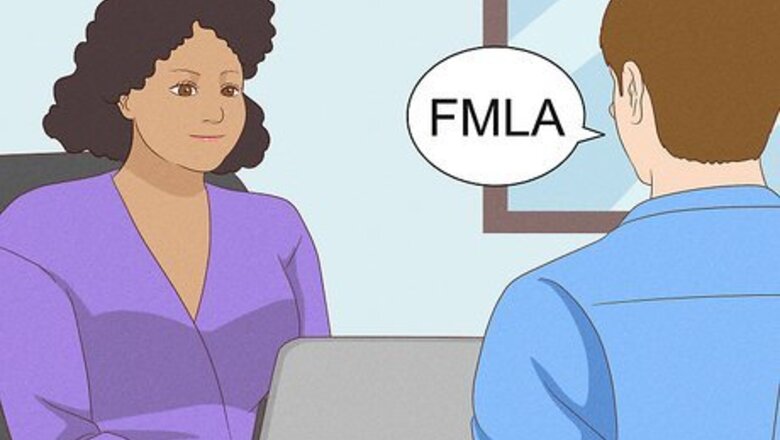
views
X
Trustworthy Source
US Department of Labor
Federal department responsible for promoting the wellbeing of workers
Go to source
- Ask your company’s HR department to see if your employer covers FMLA. To be eligible, you have to work at your company for 12 months and clock in 1,250 hours.
- Talk to your doctor about taking leave and any treatments you might need. Then, tell your employer when you’ll be taking FMLA as soon as possible.
- If your employer requires medical certification, look over and fill out the form they give you. Then, take it to your doctor for them to sign.
Determining Your Eligibility for FMLA
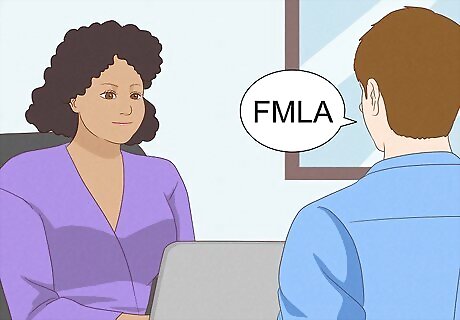
Confirm your employer is covered by FMLA. If you're not sure if your employer is covered, ask someone in the human resources department. You can also look for an FMLA notice in your workplace. Your employer is required by law to post this notice prominently if they're covered. Generally, all public agencies, including federal, state, and local government agencies and schools, are covered by FMLA. Private companies are covered if they have at least 50 employees. Even if your employer recently had massive layoffs, they're still covered by the law if they had at least 50 employees for at least 20 workweeks of this year or last year. Employees at all of a private company's locations within 75 miles of your workplace count towards the 50 total required, not just the people who work with you.
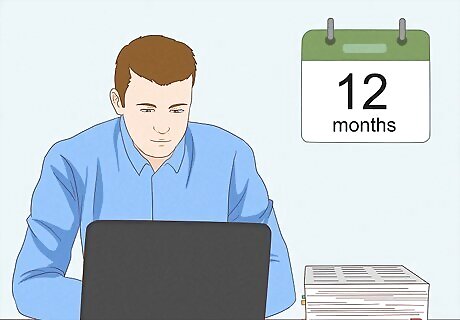
Work for your employer for at least 12 months before the date your leave would start. You don't become eligible for FMLA leave until you've been working for your employer for at least a year. However, the 12 required months don't need to be consecutive. For example, if you work for your employer for 4 months, are laid off for 2 months, then come back to work for another 8 months, you would be eligible for FMLA leave.
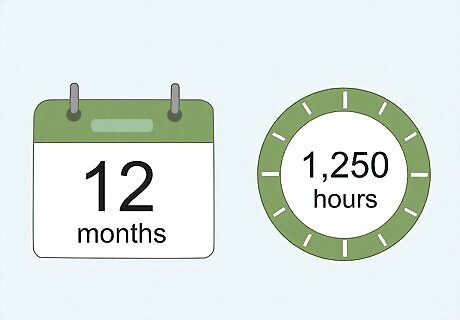
Clock in for at least 1,250 hours during the 12 months before your leave. This basically equates to working about 24 hours a week for each of those 12 months. Keep in mind that those 12 months don't have to be consecutive. For example, if you worked 35 hours a week for 4 months, then were laid off for 2 months, then came back to work and worked 30 hours a week for another 8 months, you'd have 1,520. That would be enough to qualify you for FMLA leave. Your most recent paystub will show the total hours you've worked over the past calendar year. If it's early in the year, you'll need previous paystubs to confirm a total if you're not sure. You can also check with your company's payroll or human resources department. Only hours that you actually work count—not hours that you were paid for but didn't actually work, such as sick or vacation paid time off.
Getting FMLA Leave Approved for Anxiety or Depression
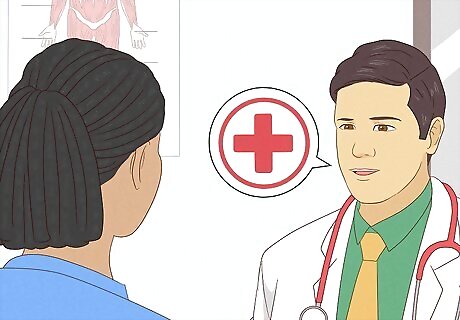
Talk to your doctor about taking leave. If you're getting any specific treatment, you can get FMLA leave for that treatment as long as your doctor would identify your anxiety or depression as a serious health condition. If your doctor classifies your anxiety or depression as a chronic condition, you can get time off based on limitations that condition gives you. For example, if you need to go to intensive therapy for 2 hours every day, you could get FMLA to cover that time off of work so you could attend those sessions. If you only have the energy to work part-time due to your chronic depression, you could potentially take FMLA leave for the other hours that you're supposed to work without being penalized by your employer. Don't let the phrase "serious health condition" scare you—in the context of the FMLA, it just means a physical or mental condition that requires continuous treatment by a healthcare provider.
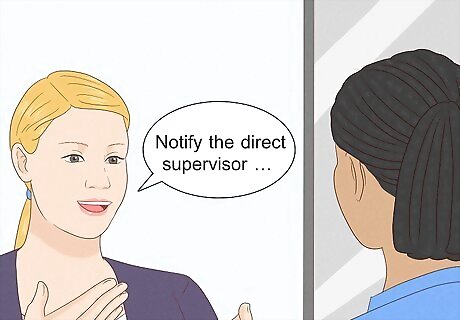
Read through your employer's leave policy. Getting FMLA leave doesn't excuse you from following your employer's policy. You can lose FMLA protection if you violate your employer's policy, even if you do everything else right, so make sure you understand it. Ask your supervisor or someone in human resources if you have any questions. For example, if your employer requires you to notify your direct supervisor of any requests for time off, you would need to submit your request to them, not to the human resources department. Your employee handbook might also include information specifically about FMLA. Read this carefully to make sure there aren't any significant differences in how your employer handles FMLA requests as opposed to regular sick leave requests.
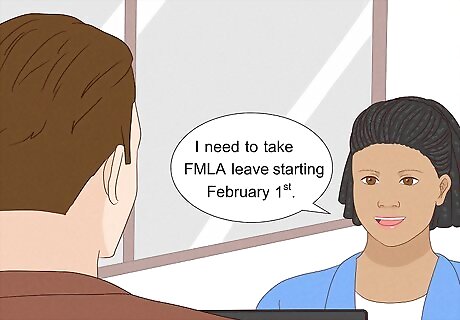
Notify your employer as soon as you know you need leave. The FMLA technically requires you to give at least 30 days' notice if you're going to take FMLA leave unless your need is an emergency. If your need is an emergency, notify your employer within 24 hours of the day you know you need to take leave. As soon as you know that you're going to need to take leave, tell your supervisor or someone in human resources (whatever your employer's policy requires). You don't necessarily have to say specifically that you're using FMLA, but it's a good idea to do so. For example, you might say, "I need to take FMLA leave starting February 1st."
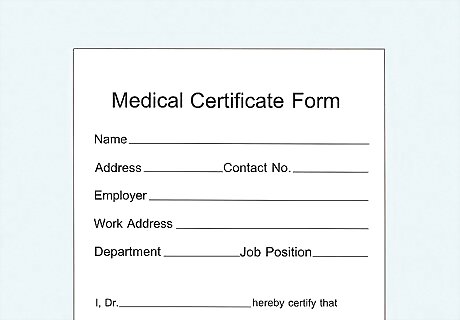
Fill out a certification form if your employer requires one. Within 5 days of your initial request, your employer will let you know if they want medical certification of your need for leave. Certification isn't required by law, but most employers will require it. They'll give you a form that you need to take to your doctor. The top part of the form might already be filled out by your employer, or they might ask you to fill it out. If your employer has already filled it out, double-check the information they've provided and make sure it's all correct. The only information you need to provide relates to your employment and job duties. You won't put any information on the form that relates to your medical condition.
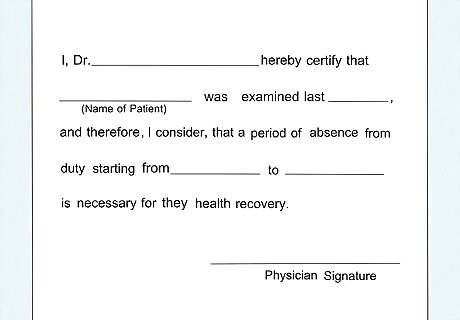
Take your certification form to your doctor to fill out. The form only requires your doctor to certify that the specific period of leave or hours you've requested are required because of your medical condition. They don't have to go into detail about your condition, give your diagnosis, or describe it in any way. Your doctor chooses the option on the form to indicate that your absence is required for treatment, or for limitations caused by a chronic medical condition. They don't have to specify the medical condition or provide your diagnosis. For example, if you have to see a therapist for treatment during work hours, those hours would be covered under FMLA. However, the doctor or therapist who certifies your absence does not need to describe the type of treatment you're getting or what that treatment is for. As far as limitations, FMLA only helps you with those that would require you to be off work. If you need accommodations at work so you can effectively do your job, your right to those accommodations would be covered by the Americans with Disabilities Act (ADA).
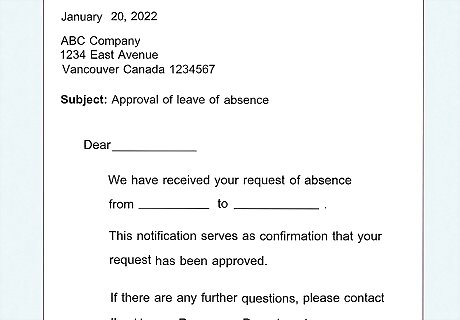
Return your certification form to your employer within 15 days. When you return the completed form to your employer, they have 5 days to notify you if they've approved your leave or not. You'll get an official letter that states the specific hours or dates that you've been approved for FMLA leave. If the hours or dates that you're approved for FMLA leave differ from the hours or dates that you requested, let your employer know as soon as possible. That gives you time to find out the reason for the discrepancy and take care of the situation. Your employer might tell you that your medical certification is incomplete. If they do, they have to give you at least a week to take the form back to your doctor and get the needed information.
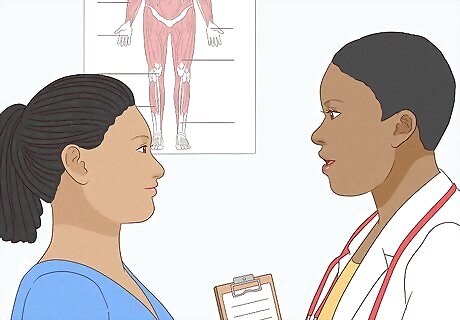
Get a second or third medical opinion if your employer asks for one. If your employer isn't satisfied with the first certification, they can ask for a second opinion (or even a third). This can be cumbersome, but FMLA allows it. It's not common for an employer to require a second opinion, and even less common for an employer to ask for a third opinion—but it is a possibility you should be aware of. If you're worried about your employer finding out that you have depression or anxiety, rest assured that HIPAA and other laws protect your privacy. You don't have to give your employer access to your medical records or give them permission to talk to your doctors.
Handling a Denial of Your FMLA Request
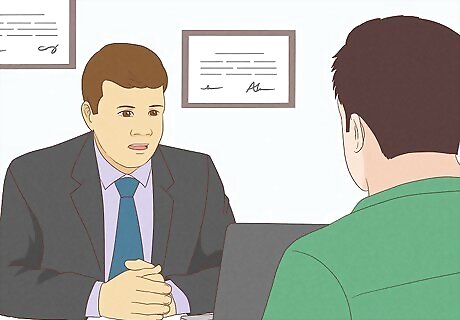
Ask your employer why they denied your FMLA request. If your employer denies your FMLA request, the law requires them to provide you with a reason in writing. If their reason is related to a mistake you made, the law requires them to give you a chance to correct it. If your employer decided you weren't eligible for FMLA, you can ask for your employment records to try to prove them wrong. For example, if they say you haven't worked enough hours in the past 12 months, you can use your employment records to prove that you have. You can let your employer talk to your doctor if you want to and you think it would clear things up. You'll have to sign a written release with your doctor giving them permission to talk to your employer.
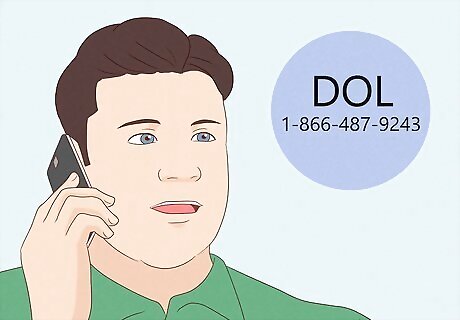
File a complaint with the Department of Labor (DOL). If you believe your employer has denied your FMLA request in violation of the law, call the DOL at 1-866-487-9243. You'll be connected to a local office that will handle your complaint. Have the following information ready when you call: Your name, address, and phone number (or other contact information) The name and location of your employer (this might not necessarily be the place where you work, if your employer's main offices are somewhere else) The phone number of your workplace and the name of your manager The circumstances of your FMLA request and your employer's response

Cooperate with the DOL investigation. A DOL agent will review your complaint and contact your employer. They may launch an investigation, which will involve multiple interviews and visits to your workplace. The agent in charge of the investigation will be in contact to let you know what they need from you. At the conclusion of the investigation, the agent will let you know what they've found. These investigations aren't usually intended to get individual results, so don't be surprised if nothing changes regarding your FMLA request. Many employers are willing to comply on their own, especially when they get a call from the DOL or they're facing an investigation. So it's possible that, just by calling the DOL, your employer will reverse their decision and approve your leave.

Talk to an attorney if you aren't satisfied with the outcome at the DOL. At the conclusion of the investigation, the DOL will give you a letter letting you know that you have the right to file a private lawsuit. An attorney who specializes in employee rights and employment law can help you if the DOL isn't able to get you the FMLA leave that you're entitled to. These attorneys typically don't ask for any money upfront, so don't worry if you have limited funds available. They'll look at your situation and give you some advice on how to proceed and you can go from there.

















Comments
0 comment